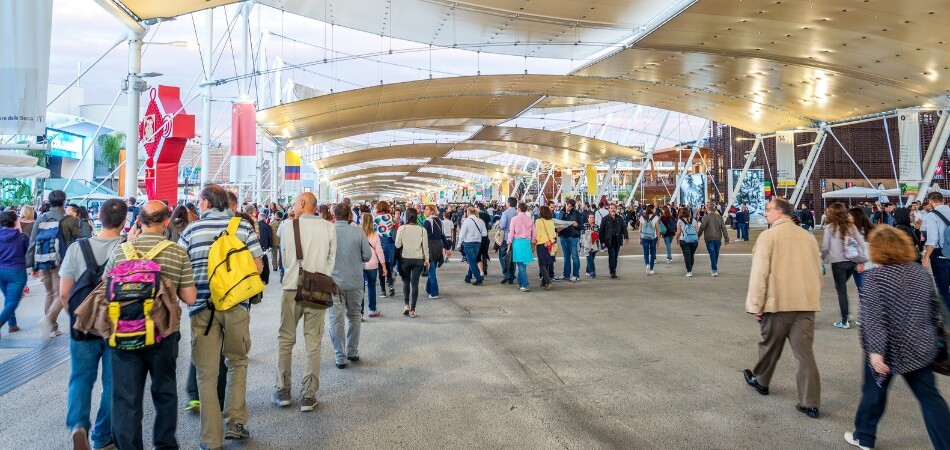Fairs have long been fascinating gatherings where a myriad of products are showcased, ranging from artisanal crafts to cutting-edge technology. But have you ever paused to think, what is the purpose of a fair?
A fair is a vibrant platform promoting trade. Historically, these events have served as a stage for a diverse array of products, neatly categorized into specific commodity or industrial sectors.
This unique blend of commerce and culture not only stimulates economic activity but also offers a kaleidoscope of learning and entertainment. As we dive deeper into the multifaceted world of fairs, join us in uncovering their significance and the dynamic roles they play in our society. Stay tuned for a journey through the colorful aisles of history, innovation, and community spirit!
What the Fair is About?
The essence of a fair reveals a world of commerce, culture, and community. These events are not just about transactions; they celebrate human ingenuity and interaction. Each fair is a unique tapestry, weaving together various strands of society.

Markets offer everything from traditional handicrafts to modern innovations in their bustling lanes. This diversity reflects the fair’s role as a crossroads of trade and trends. It’s a place where businesses flourish, and visitors gain new perspectives.
Fairs also serve as cultural melting pots, showcasing local and international customs and crafts. They become stages for sharing stories, skills, and experiences, fostering a sense of global community. This cultural exchange enriches participants and attendees, leaving lasting impressions long after the fair concludes.
What is the Purpose of a Fair?
Fairs have evolved beyond mere marketplaces into dynamic events with multifaceted purposes. They’re not just about buying and selling; they’re celebrations of culture, innovation, and community. Each fair, with its unique flavor, serves several key functions in today’s world. Here they are:

Promotion of Trade
Fairs act as bustling hubs for commerce, offering vendors a platform to showcase and sell their products. This environment fosters business growth and encourages economic vitality. It’s a place where deals are made, and new markets are discovered.
Beyond just sales, fairs facilitate networking between businesses, creating opportunities for collaborations and partnerships. They bring together a diverse range of industries, allowing for cross-sector innovation and exchange. This melting pot of commerce propels industries forward, driving both local and global economic progress.
Cultural Exchange
A fair is also a celebration of cultural diversity, displaying a rich tapestry of traditions and customs. It allows artisans to share their heritage through crafts, food, and performances. This cultural showcase fosters understanding and appreciation among different communities.
Visitors experience a world tour in a single location, broadening their cultural horizons. Fairs also serve as platforms for artistic expression, where creativity flourishes, and new art forms are born. They preserve traditional arts while also encouraging contemporary innovation, ensuring cultural vibrancy for future generations.
Educational Opportunities
Education is a subtle yet significant aspect of fairs. They provide a hands-on learning experience about various industries and cultures. This interactive form of education appeals to all ages, making learning fun and engaging.
Fairs often feature demonstrations, workshops, and seminars, offering deeper insights into specific fields. They become venues for knowledge exchange, where experts and enthusiasts can share and gain expertise. This educational role of fairs contributes to community development and personal growth, making them invaluable educational resources.
Community Engagement
Fairs foster a sense of community by bringing people together for shared experiences. They are social events where memories are made, and traditions are passed down.
The communal atmosphere encourages participation and engagement, strengthening community bonds. They also serve as a platform for local charities and organizations, promoting social causes and community welfare. Fairs thus play a crucial role in community building, enriching the social fabric of the areas they serve.
Fairs are more than just temporary marketplaces; they are pivotal events that promote trade, cultural exchange, education, and community building. They weave together the economic, social, and cultural threads of society, creating a vibrant tapestry that enriches our lives in countless ways. As we continue to celebrate and participate in fairs, we contribute to this ongoing legacy of communal growth and cultural richness.
Different Types of Fairs
Fairs have always been a cornerstone of social and economic life, offering a wide array of experiences and opportunities. From local community gatherings to international expos, the variety is immense. Each type of fair has its unique charm and purpose, catering to diverse interests and industries.
Trade Fairs
Trade fairs are primarily focused on business-to-business interactions. They provide a platform for companies to showcase new products and technologies. These events are pivotal for networking, making business deals, and exploring industry trends. Trade fairs often have a specific industry focus, attracting specialized professionals and companies.
Agricultural Fairs
Agricultural fairs celebrate rural life and farming practices. They feature livestock shows, farming equipment demonstrations, and agricultural product exhibitions. These fairs are essential for farmers to exchange knowledge and showcase their produce. They also educate the public about farming and food production.
Art and Craft Fairs
Art and craft fairs are vibrant showcases of creativity and craftsmanship. Artists and artisans display their work, ranging from paintings to handmade jewelry. These events support local artists and provide a unique shopping experience for visitors. They are also great places to find one-of-a-kind gifts and home decor.
Cultural Fairs
Cultural fairs focus on celebrating the traditions and customs of various communities. They feature traditional music, dance, food, and clothing from around the world. These fairs promote cultural exchange and understanding, enriching the social fabric of communities. They are wonderful events for families and individuals interested in cultural exploration.
Science and Technology Fairs
Science and technology fairs highlight innovations and advancements in these fields. They are platforms for new inventions, scientific research, and technological breakthroughs. These fairs often include interactive exhibits and workshops, making them educational and exciting. They are especially appealing to students and professionals in the scientific and technological sectors.
Fairs come in many forms, each offering a unique window into different aspects of life and industry. Whether it’s for business, pleasure, education, or cultural enrichment, there’s a fair out there for everyone. They continue to be important venues for sharing, learning, and celebrating the diverse tapestry of human experience.
What Happens at a Fair?
Fairs are bustling events, each with its unique blend of activities and experiences. They’re a whirlwind of sights, sounds, and smells, offering something for everyone. From thrilling rides to business networking, the range of happenings is vast and varied.

- Exhibitions and Displays: Various exhibitors showcase their products or services, attracting visitors with innovative and creative displays.
- Sales and Trade: Commercial transactions are a key aspect, with vendors selling everything from crafts to high-tech gadgets.
- Cultural Performances: Fairs often feature live performances, including music, dance, and theater, celebrating diverse cultural traditions.
- Educational Workshops: Many fairs host workshops and seminars, providing learning opportunities on various topics and industries.
- Networking Opportunities: Business fairs provide a platform for professionals to meet, exchange ideas, and form new partnerships.
- Food and Drink: Culinary experiences are central, with a range of food stalls offering local and international cuisine.
- Rides and Games: Amusement fairs include fun rides and games, attracting families and thrill-seekers alike.
- Art Exhibitions: Art fairs display works from emerging and established artists, offering a feast for the eyes and soul.
- Livestock Shows: Agricultural fairs often include livestock competitions and displays showcasing farming practices and animals.
- Craft Demonstrations: Artisans demonstrate their skills, offering insights into crafts like pottery, weaving, and woodcarving.
A fair is a microcosm of culture, business, education, and entertainment. It’s a place where different worlds collide, creating a vibrant and unforgettable experience. Whether for leisure, learning, or business, a visit to a fair promises a rich and varied adventure.
Is Fair and Expo one and the Same?
No, fairs and expos are not quite the same, although they share some similarities. Both are large-scale events that bring together vendors, exhibitors, and the public for various purposes. However, their scale, focus, and audience can differ significantly, distinguishing one from the other.
Fairs are often community-oriented events, encompassing a broad range of activities from local crafts to amusement rides. They may focus on agriculture, culture, or specific industries, but they’re generally more diverse in nature. Fairs are typically recurring, often annually, and are deeply rooted in local or regional traditions and communities.
Expos, on the other hand, are larger in scale and more global in scope. They’re usually more focused on industry and innovation, showcasing the latest advancements and trends. Expos are often international, attracting participants and visitors from across the globe, and may not occur as regularly as fairs. While fairs celebrate local culture and community, expos emphasize global connectivity and industry progress.
Final Brief
In summing up this exploration of fairs, it’s evident that their essence extends far beyond mere temporary marketplaces. “What is the purpose of a fair?” one might ask. It’s a multifaceted blend of promoting trade, cultural exchange, educational growth, and community engagement.
Fairs, in their various forms – from trade and agricultural to art, cultural, and science fairs – offer rich, diverse experiences. They are not just events; they are the lifeblood of communities and industries, providing platforms for innovation, cultural appreciation, and learning.
While similar to expos in some aspects, fairs hold a unique position in their focus on local communities and traditions. Their importance lies in their ability to weave together different strands of society, creating a tapestry that enriches our lives in countless ways. Thus, fairs continue to play a crucial role in our society, celebrating communal growth and cultural richness.


